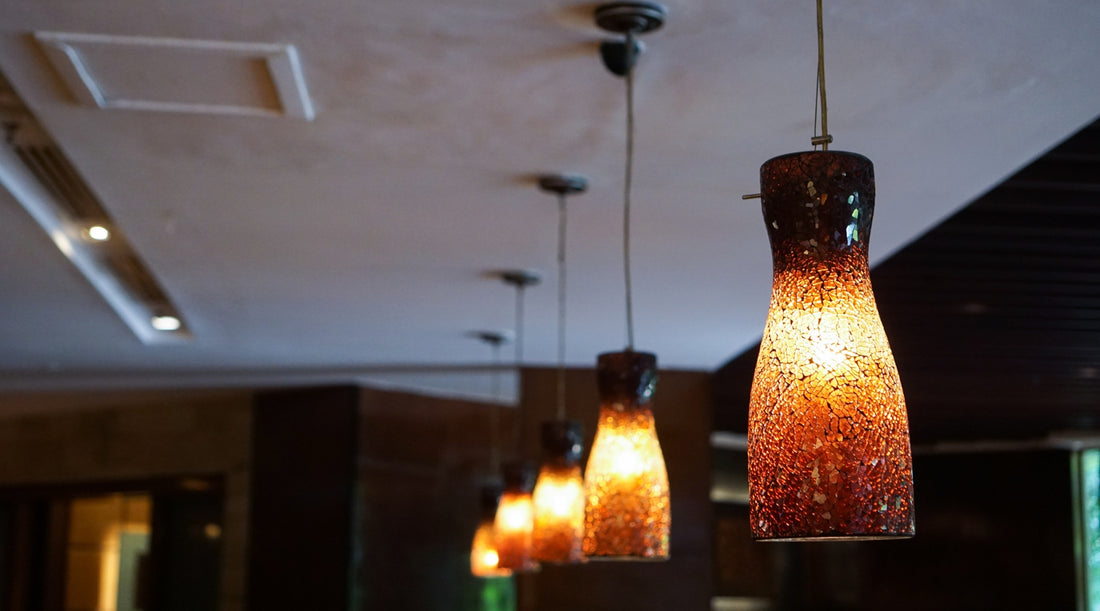
The Transformative Power of Smart Lighting: Enhance Energy Efficiency, Convenience, Security, and Ambiance in Your Home
Ron StotzShare
Introduction
Smart lighting refers to lighting systems that can be controlled remotely and offer advanced features such as automation, customization, and integration with other smart devices. In today's technologically advanced world, smart lighting has gained popularity among homeowners due to its numerous benefits and transformative potential for homes. This article will explore the benefits of smart lighting for homes, including energy efficiency and cost savings, convenience and automation, enhanced security and safety, and the ability to set different moods and ambiance.
Energy Efficiency and Cost Savings
One of the key advantages of smart lighting is its energy efficiency, which can lead to significant cost savings. Smart lighting systems typically use LED technology, which is highly energy-efficient and consumes less electricity compared to traditional incandescent bulbs. LED bulbs are designed to convert a larger portion of electrical energy into light, reducing energy waste and minimizing electricity consumption. By automating and controlling lights, smart lighting helps further reduce energy waste by ensuring that lights are only on when needed. For example, lights can be programmed to turn off when a room is unoccupied or to dim when natural daylight is sufficient.
In addition to energy efficiency, smart bulbs have a longer lifespan compared to incandescent bulbs, resulting in cost savings over the long term. LED bulbs can last up to 25 times longer than traditional incandescent bulbs, reducing the frequency of bulb replacements and the associated costs. While the initial investment in smart lighting may be higher than traditional lighting options, switching to smart lighting can save money on lighting costs in the long run due to its energy-efficient features.
Convenience and Automation
Smart lighting offers unparalleled convenience and automation features that can greatly enhance the overall living experience. Homeowners can control all the lights in their homes simultaneously through a centralized system or smartphone app. This eliminates the need to manually go from room to room to turn off lights or adjust brightness levels. With automatic scheduling features, users can set specific times for lights to turn on or off, providing convenience and eliminating the need for manual operation. For example, lights can be programmed to turn on just before the homeowner arrives home, creating a welcoming environment.
Smart lighting also enables remote control using smartphones or tablets, allowing users to turn lights on or off even when they are not at home. This provides added convenience and peace of mind, as homeowners can ensure that their lights are off when they are away, saving energy and deterring potential intruders. Motion detectors can be integrated with smart lighting systems, enabling lights to automatically turn on when motion is detected. This not only provides convenience but also enhances safety by providing illumination in areas such as hallways or staircases.
Enhanced Security and Safety
Smart lighting plays a crucial role in enhancing home security and safety. By allowing homeowners to remotely control and schedule lights, smart lighting creates the illusion of occupancy even when they are away. This can deter potential intruders by giving the appearance that someone is home. The ability to simulate occupancy through smart lighting is a valuable security feature, providing an added layer of protection for homes.
Moreover, smart lighting can be integrated with home security systems, allowing lights to be triggered by security events such as motion detection or door/window sensors. For example, if a motion sensor detects movement outside the house, the smart lighting system can activate the outdoor lights, illuminating the surroundings and deterring intruders. Motion triggers can also be used indoors to activate lights, improving both security and convenience by providing illumination when needed.
Mood and Ambiance Setting
In addition to its practical benefits, smart lighting offers the opportunity to set different moods and create the desired ambiance in a home. Smart lighting systems offer a wide range of colors, allowing users to choose from a spectrum of lighting options and create different atmospheres. For example, warm white light can create a cozy and relaxing ambiance in a living room, while cool white light can provide a bright and energizing atmosphere in a workspace.
The ability to customize lighting scenes and color combinations provides homeowners with flexibility in setting the desired ambiance in different rooms. With smart lighting, homeowners can easily adjust the brightness, color temperature, and color of the lights to suit various activities or moods. This allows for easy transitions between different lighting settings, whether it's a romantic dinner, a movie night, or a vibrant party. Smart lighting can be used to decorate and set the mood for gatherings and parties, adding an extra level of excitement and entertainment to any event.
Integration with Smart Home Systems
Smart lighting systems seamlessly integrate with other smart home devices and systems, allowing homeowners to create a comprehensive and interconnected smart home ecosystem. Popular smart home systems and apps that work well with smart lighting include Philips Hue, SmartThings, Belkin Wemo, GE Cync, Savant, and Google Home. These systems provide a centralized platform where homeowners can control and manage their smart lighting along with other smart devices such as voice assistants, smart thermostats, and home automation hubs. This integration allows for a cohesive and convenient smart home experience.
Smart lighting serves as a foundational component for home automation, enabling homeowners to expand their smart home ecosystem and control multiple aspects of their homes through a centralized platform. For example, homeowners can create automation routines that turn on specific lights, adjust their brightness, and activate other smart devices based on certain triggers or schedules. This level of integration and automation offers enhanced comfort, convenience, and energy efficiency within the home.
Conclusion
Smart lighting provides a multitude of benefits for homes, making it a worthwhile investment for homeowners. The energy efficiency and cost savings, convenience and automation, enhanced security and safety, and mood and ambiance setting capabilities make smart lighting a valuable addition to any home. Upgrade to smart lighting and unlock the transformative potential of this technology, enhancing your overall living experience and contributing to a more efficient and modern home environment.
Frequently Asked Questions (FAQs)
Q1: What is smart lighting, and how does it work?
A: Smart lighting refers to lighting systems that can be controlled remotely and offer advanced features such as automation, customization, and integration with other smart devices. They work by using wireless communication protocols like Wi-Fi or Bluetooth to connect with a central control system, allowing users to adjust settings through smartphone apps or voice commands.
Q2: How does smart lighting contribute to energy efficiency and cost savings?
A:Smart lighting systems use energy-efficient LED technology, consume less electricity, and minimize energy waste by automatically turning lights on or off when needed. LED bulbs also have a longer lifespan, reducing replacement costs and saving money in the long run.
Q3: What convenience and automation features do smart lighting systems offer?
A:Smart lighting provides centralized control, allowing users to adjust lights throughout their homes with ease. Automation features include setting schedules, motion detection, and remote control using smartphones or tablets. These features enhance convenience and security by ensuring lights are only on when needed.
Q4: How does smart lighting enhance home security and safety?
A:Smart lighting can simulate occupancy when homeowners are away, deterring potential intruders. It can also integrate with home security systems to activate lights in response to security events like motion detection. This added layer of security enhances safety and peace of mind.
Q5: What mood and ambiance setting capabilities does smart lighting offer?
A:Smart lighting systems offer a wide range of colors and customization options, allowing users to create different atmospheres in their homes. Users can adjust brightness, color temperature, and color to set the desired mood for various activities, such as a cozy dinner or a vibrant party.
Q6: How does smart lighting integrate with other smart home systems?
A:Smart lighting seamlessly integrates with popular smart home systems and apps, providing a centralized platform for controlling various smart devices. This integration enables homeowners to create automation routines, connect voice assistants, thermostats, and home automation hubs, and enhance their overall smart home experience.
